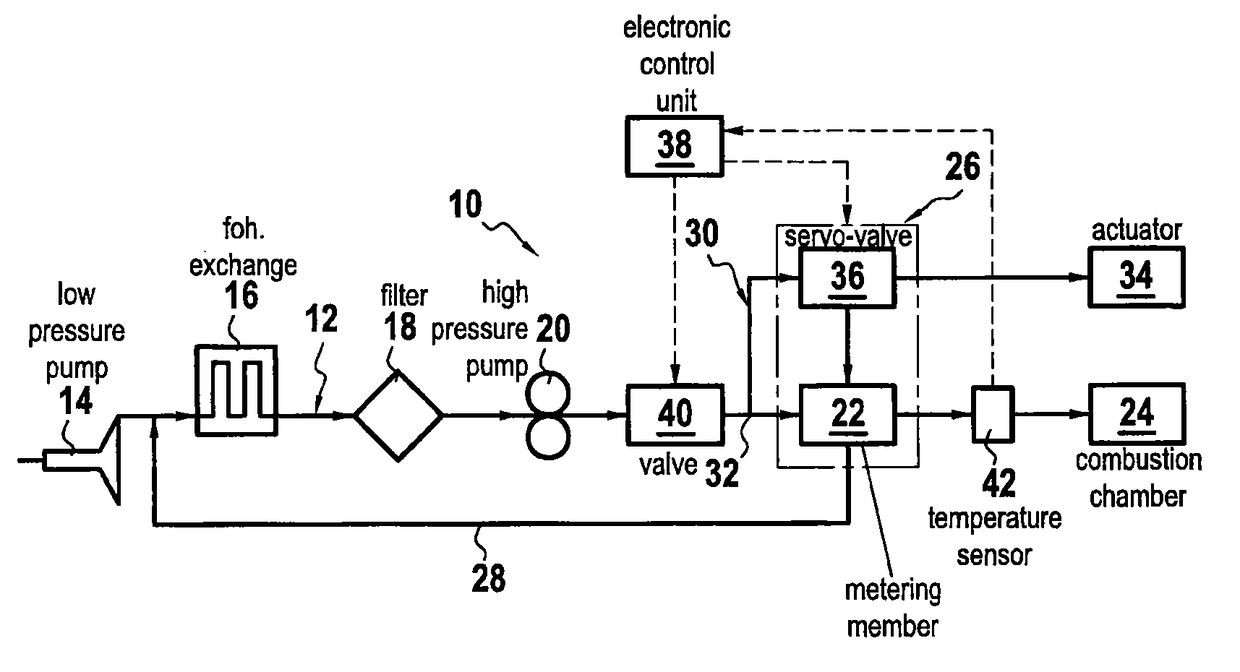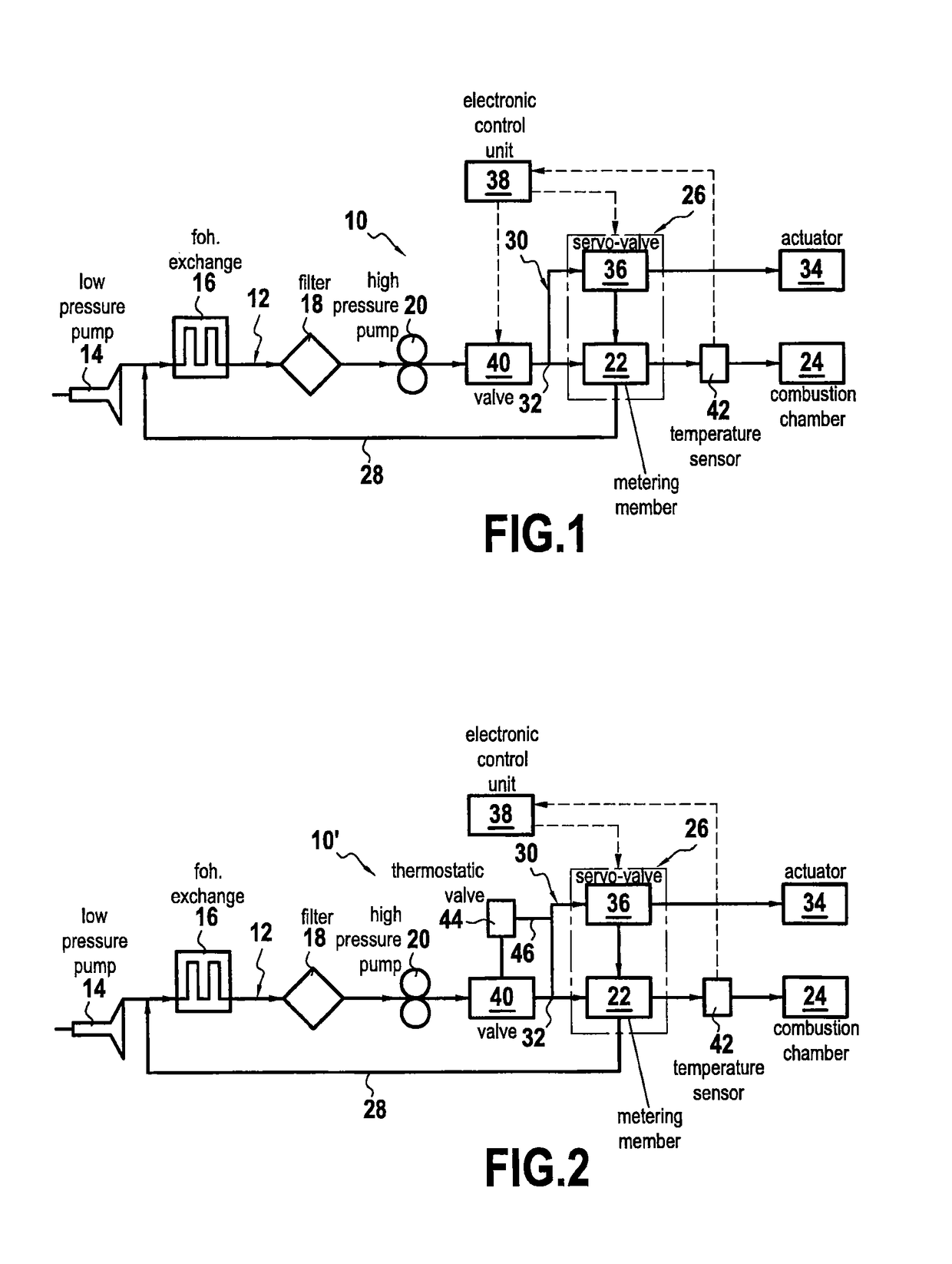Fuel circuit for an aviation turbine engine, the circuit having a fuel pressure regulator valve
a turbine engine and circuit technology, applied in the direction of turbine/propulsion engine ignition, turbine/propulsion fuel heating, engine starters, etc., can solve the problems of hydraulic power delivery to the fuel then dissipation, increase in pressure difference between the inlet and the outlet of the pump in the main fuel line, etc., to achieve the effect of increasing the temperature of the fuel and simplifying and effective manner
- Summary
- Abstract
- Description
- Claims
- Application Information
AI Technical Summary
Benefits of technology
Problems solved by technology
Method used
Image
Examples
Embodiment Construction
[0022]With reference to FIG. 1, the fuel circuit 10 for an aviation turbine engine comprises main fuel line 12 that is fitted in the fuel flow direction with a low pressure pump 14, a fuel / oil heat exchanger 16, a main fuel filter 18, and a so-called “high pressure” positive displacement pump 20. Naturally, a different arrangement of the equipment could be envisaged.
[0023]The upstream side of the low pressure pump 14 is connected to the fuel tank of the airplane (not shown in FIG. 1). The fuel / oil heat exchanger 16 serves to cool the oil for lubricating the engine by exchanging heat with the fuel via a heat exchange surface that separates these two fluids, and that also has the consequence of heating the fuel.
[0024]Downstream from the high pressure pump 20, the main fuel line 12 includes a metering member 22 for controlling the rate at which fuel is injected into the combustion chamber 24 of the engine via fuel injection systems (not shown). The fuel metering member 22 is controlled...
PUM
 Login to View More
Login to View More Abstract
Description
Claims
Application Information
 Login to View More
Login to View More - R&D
- Intellectual Property
- Life Sciences
- Materials
- Tech Scout
- Unparalleled Data Quality
- Higher Quality Content
- 60% Fewer Hallucinations
Browse by: Latest US Patents, China's latest patents, Technical Efficacy Thesaurus, Application Domain, Technology Topic, Popular Technical Reports.
© 2025 PatSnap. All rights reserved.Legal|Privacy policy|Modern Slavery Act Transparency Statement|Sitemap|About US| Contact US: help@patsnap.com


